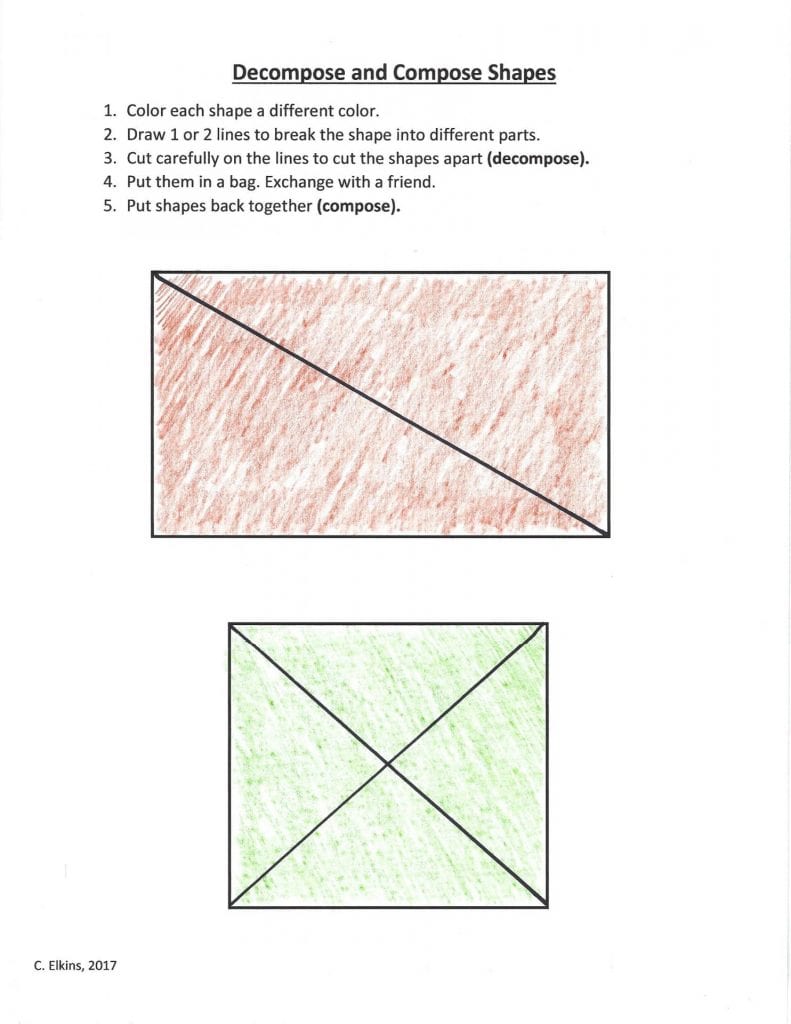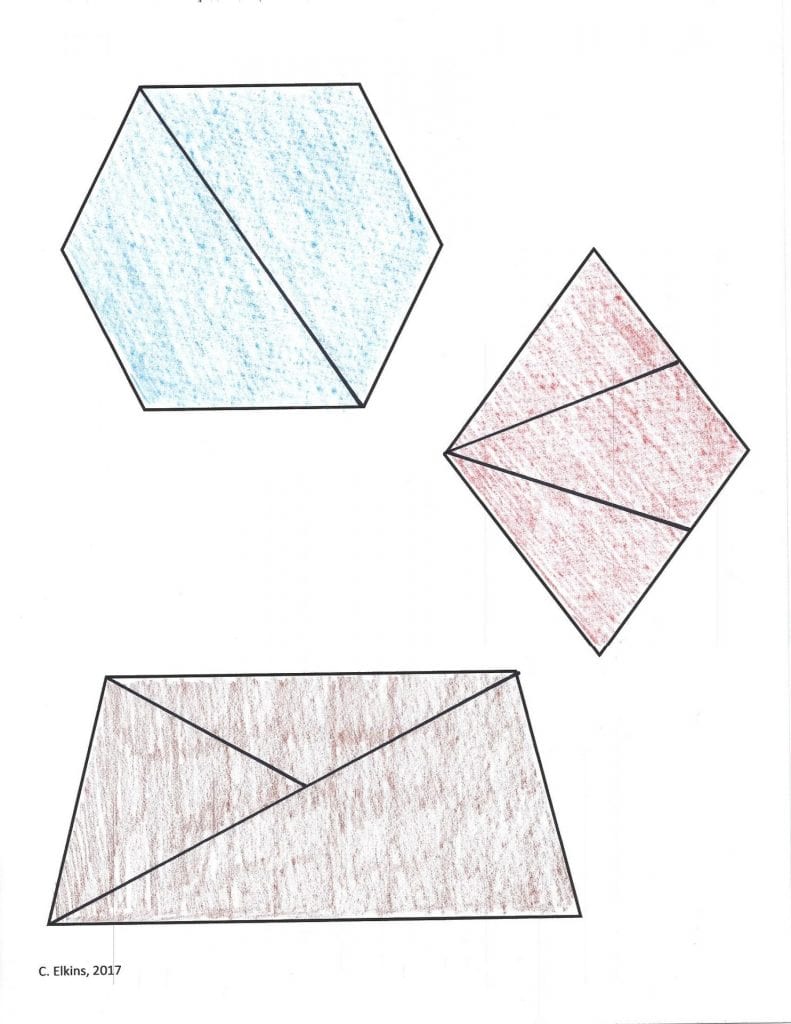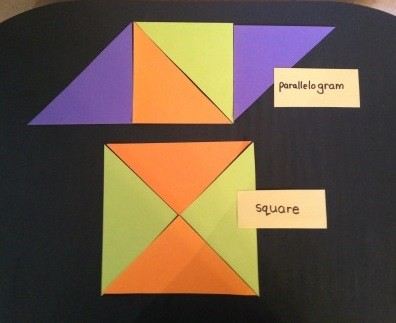by C. Elkins, OK Math and Reading Lady
There are so many good ways to help students compose and decompose shapes (2D and 3D), so I will focus on some more by using tangrams and 2D paper shapes. In case you missed it, my last post focused on ways to use 1″ color tiles and pattern blocks to compose and decompose shapes. Click HERE to link back to that.
- Give students paper shapes of these polygons: rectangle, square, hexagon, trapezoid, rhombus. Click here for a FREE pdf copy: Decompose and Compose Polygons.
- Students should color each paper shape one solid color (a different color for each shape). My advice is to use light colors because they will be drawing lines on the shapes and light colors enable them to see the lines.
- Model how to draw 1 or 2 lines to decompose the shape into smaller shapes. For first and 2nd grade, I recommend you show them how to use at least one corner of the shape to connect to another corner or side using a straight edge or ruler. This way the newly created shapes will resemble ones they already know (triangle, trapezoid, rectangle). Older students can be given a little more leeway — their decomposing may result in other more irregular polygons. Here is one way to decompose.
- Cut apart on the lines. Have students put their initials or name on the back of each piece (in case it gets separated or ends up on the floor).
- Each student puts their cut-up pieces in a baggy for safe-keeping. Then the student can take them out and try to compose them back into their original shapes. This is where the color-coding comes in handy (all the yellow go together, all the green, etc.).
- Students can trade their baggies with others to compose their shapes.
- When students are done with the shape puzzles, they can glue them back together on background construction paper (or take them home for practice, or keep at school for ongoing work).
- Discuss together how many different ways these shapes were decomposed using 1 or 2 lines.
- Use the book, “The Greedy Triangle” by Marilyn Burns
 as a springboard to compose other polygons using various numbers of triangles. In this book, the triangle keeps adding a shape to himself (after a visit to the “Shapeshifter”). There are many good pictures in this book illustrating common things with the named shape. This is also a great way to connect art to math. You can start with squares which the students must cut in half on the diagonal, or start with pre-cut triangles. Length of edges must match. Level 0 students can just try out different combinations. Level 1-2 students would analyze the properties more and name the new shapes. You can even emphasize symmetry (as I have shown with the bottom row). Here is the link to the full article about this wonderful activity. Math Art: The Greedy Triangle Activity
as a springboard to compose other polygons using various numbers of triangles. In this book, the triangle keeps adding a shape to himself (after a visit to the “Shapeshifter”). There are many good pictures in this book illustrating common things with the named shape. This is also a great way to connect art to math. You can start with squares which the students must cut in half on the diagonal, or start with pre-cut triangles. Length of edges must match. Level 0 students can just try out different combinations. Level 1-2 students would analyze the properties more and name the new shapes. You can even emphasize symmetry (as I have shown with the bottom row). Here is the link to the full article about this wonderful activity. Math Art: The Greedy Triangle Activity
3. Give students these various quadrilaterals: square, rectangle, parallelogram, trapezoid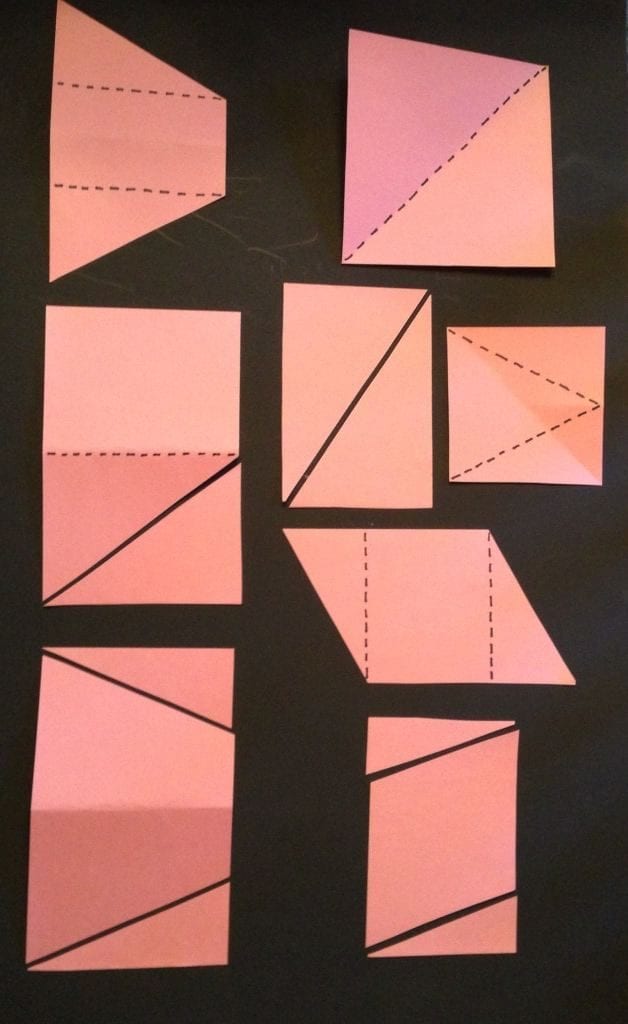
The activity sounds similar to the above, but students will be using their knowledge of shape attributes and properties (Level 2 or above) to decompose them into smaller shapes. and name / describe the decomposed shapes. More advanced students can come up with ways to compute the area based on these decompositions and then relate them to the standard formulas.
- Example: You can decompose a square into 2 equal triangles. Then it is easy to see why the formula for area of a triangle is 1/2b•h.
- Decompose a parallelogram into a square or rectangle, plus the two triangles on the ends. The formula is b•h. Students must use knowledge of perpendicular lines to determine the height of a parallelogram. Can they see that if they took one of the triangles and placed it on the opposite end, it would resemble a regular rectangle (which is also classified as a parallelogram)?
- Decompose a rectangle into a trapezoid and 2 triangles (see picture).
- Decompose a trapezoid into a square or rectangle plus the two triangles on the ends. Can you see
- why the formula for area of a trapezoid is is h(b1 + b2 / 2)?
4. Use tangrams to create random designs, shapes, or other recognizable pictures. 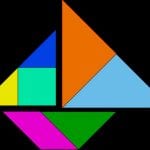 Most tangram sets come with some outlines to follow. In case you don’t have any, here are some good resources.
Most tangram sets come with some outlines to follow. In case you don’t have any, here are some good resources.
- This teacher has fantastic stuff (math and ELA): Tangram polygon exploration (FREE on TPT)
- Tangram puzzles (FREE on TPT by Being Inspired)
- Grandfather Tang’s Story by Ann Tompert (link to Amazon)
Still more composing and decomposing to go, especially with 3D shapes. STAY TUNED!!!


